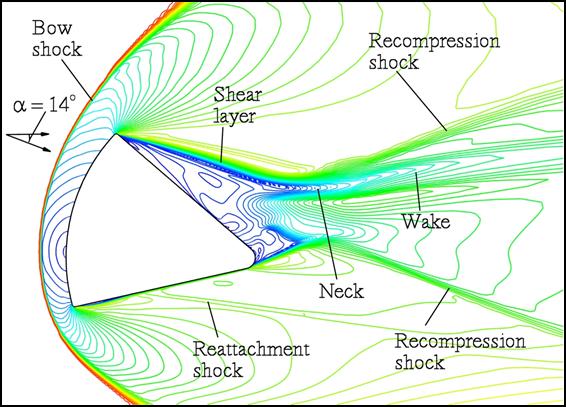Simulation of Flow Separation and Reattachment on a Re-entry Capsule Afterbody Frustum
In this paper the flowfield around an Apollo-shaped capsule at non-zero angle of attack is numerically investigated.
The focus is on the afterbody flowfield, especially the windward side. Experiments have shown that there is local flow
separation and reattachment on the windward meridian at selected angles of attack. Local flow reattachment on the afterbody
can lead to high surface heating. Further, the size of the windward separation bubble is found to decrease with increasing
angle of attack. Simulations are performed at a fixed Mach number and varying angles of attack. The solutions reproduce
all the experimentally observed flow features, including a localized separation bubble on the windward meridian. The
simulations also predict the variation of the windward reattachment location with angle of attack correctly. The numerical
solutions are further used to study the unsteady nature of the flow, the three-dimensional flow pattern in the near wake
and its effect on the surface heat transfer rate.
Ref: Sinha, K., and Dey, A., "Simulation of Flow Separation and Reattachment on a Re-entry Capsule Afterbody Frustum", AIAA Paper 2010-1561, Aerospace Sciences Meeting, Orlando, FL, Jan 2010..
Representative results:

Mach number distribution in the pitch plane of an Apollo-shaped capsule at Mach 4.9 and angle of attack of 14 deg.

Volume stream lines showing the flow pattern near the base of the capsule.

